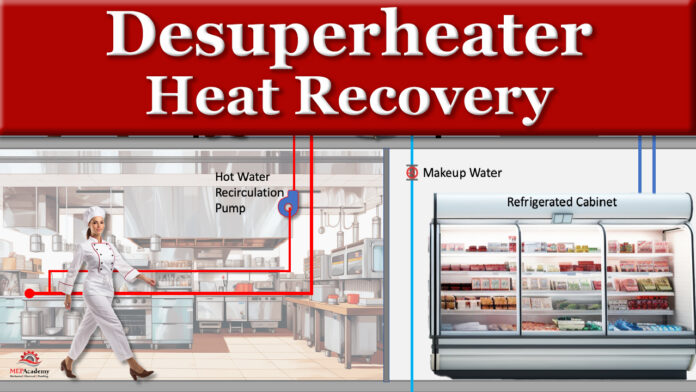Desuperheater. In this article we’ll show you how a desuperheater can be used in conjunction with a service water heater to increase its energy efficiency. It works by utilizing waste heat from an air conditioning or refrigeration system to preheat the water before it enters the service water heater.
If you prefer to watch the video of these presentation than scroll to the bottom or click on the following link. Desuperheater.
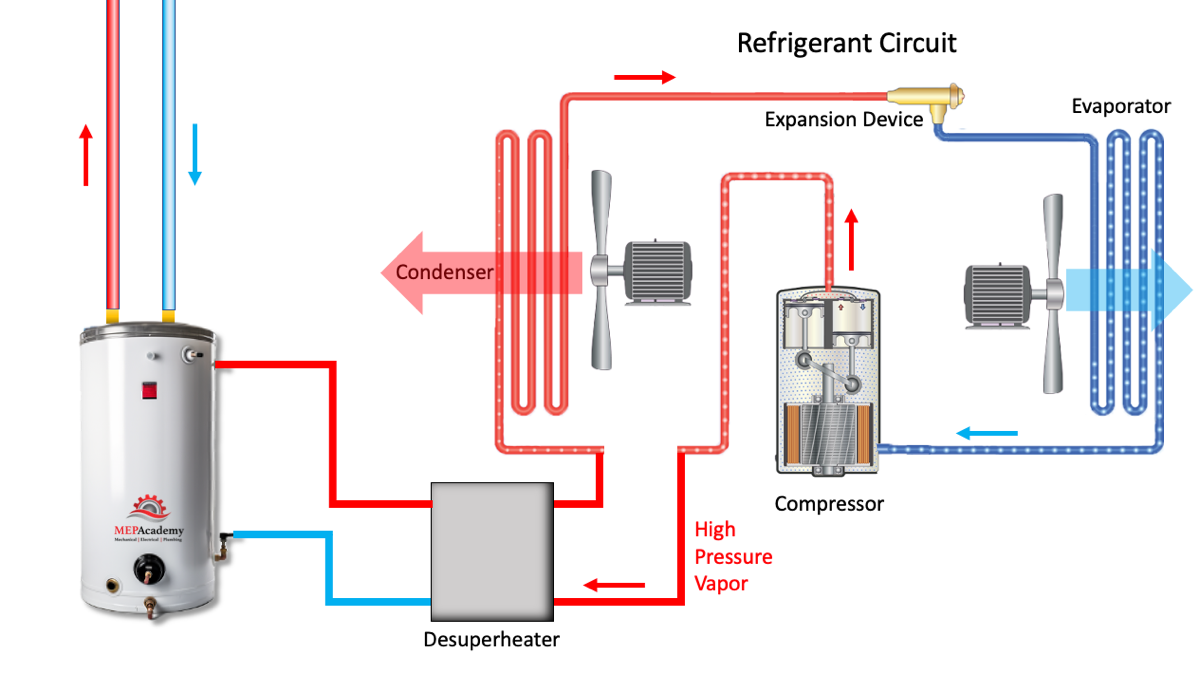
Here’s a general overview of how a desuperheater could works, our system is slightly different as were using a service water heater in a grocery store that has the need for hot water such as in a kitchen, but the concept is the same:
1. System Setup: The desuperheater is typically integrated into a heat pump or air conditioning system, and consists of a heat exchanger.
2. Heat Extraction: When the air conditioning or refrigeration system operates, it produces high-pressure, high-temperature refrigerant vapor. The desuperheater diverts this superheated refrigerant to the heat exchanger.
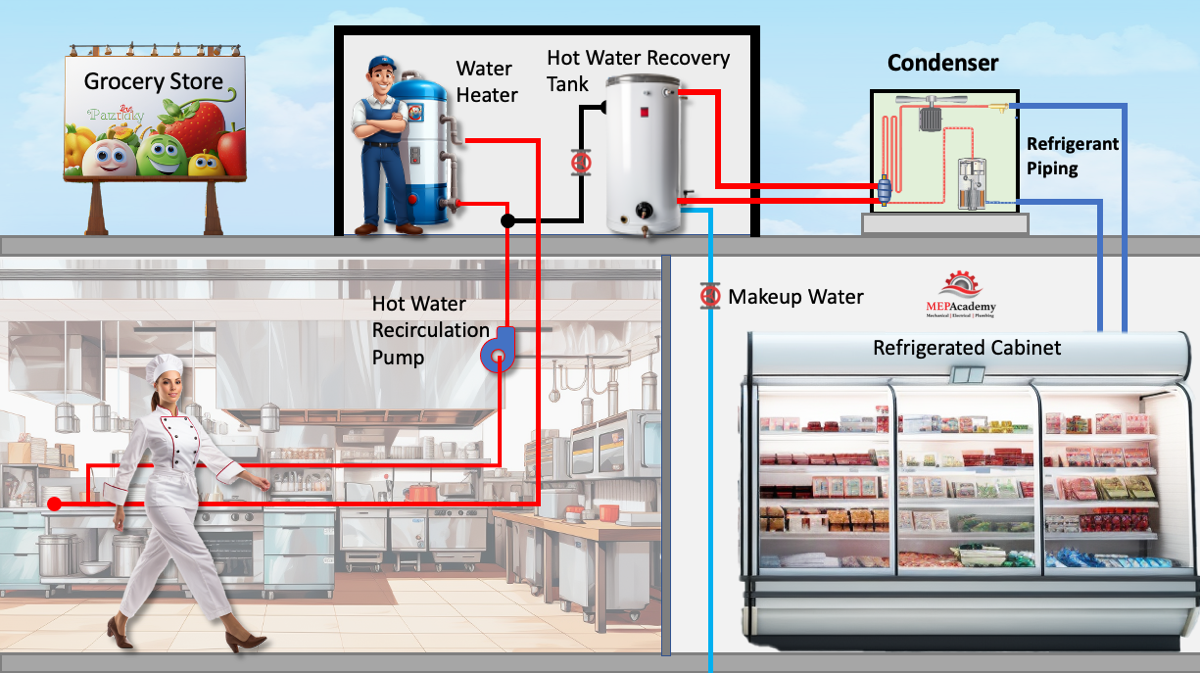
3. Heat Transfer: The superheated refrigerant passes through the heat exchanger, where it transfers its heat to the water flowing through the heat exchanger. This heat transfer process raises the temperature of the water.
4. Temperature Control: The control valve regulates the flow of superheated refrigerant to the recovery tank heat exchanger, adjusting the amount of heat transferred based on the desired water temperature. This ensures that the water doesn’t get excessively heated.
5. Preheated Water Supply: The preheated water from the desuperheater is then directed to the service water heater. The service water heater’s primary heating source, such as a gas burner or electric element, will still be needed to raise the temperature further to the desired hot water temperature.
By utilizing the waste heat from the air conditioning or refrigeration system, the desuperheater reduces the workload on the service water heater’s primary heating source. This can result in significant energy savings and increased overall system efficiency, as the water heater doesn’t have to work as hard to reach the desired temperature.
It’s worth noting that the effectiveness of a desuperheater depends on factors such as the operating conditions of the air conditioning or refrigeration system, the demand for hot water, and the temperature difference between the preheated water and the desired hot water temperature. Consulting with a professional HVAC technician or engineer is recommended for a proper assessment and installation of a desuperheater system.
Refrigerant Chart
Looking at a refrigerant chart of this process we can see that after the compressor raises the pressure and temperature of the refrigerant, it then enters the desuperheater where it gives up its heat.
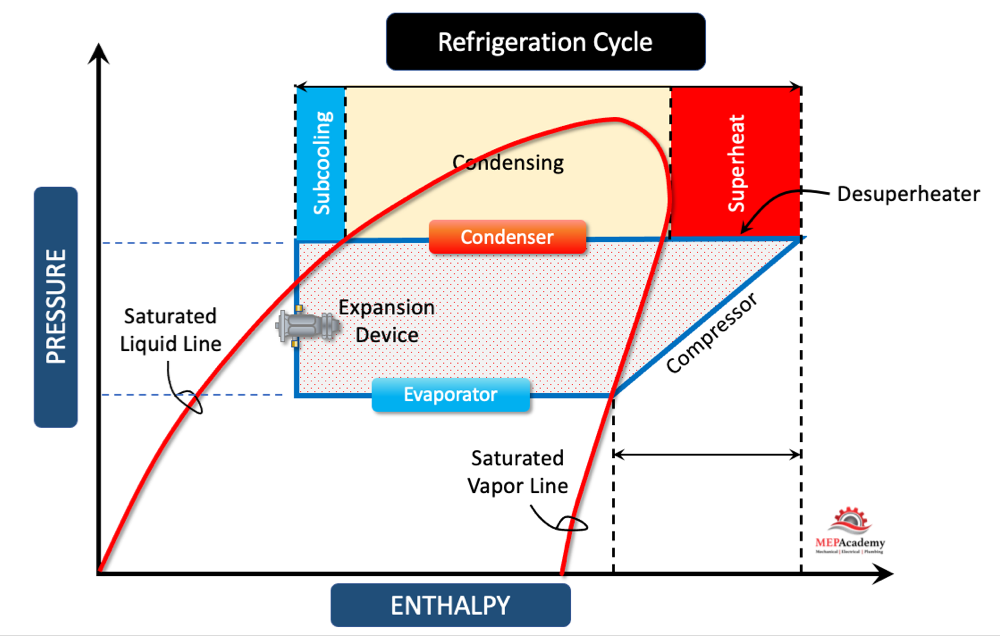
Desuperheater in a Geothermal Heat Pump System
A desuperheater can be used in conjunction with a geothermal heat pump to provide additional hot water heating capabilities. In a geothermal heat pump system, the desuperheater utilizes excess heat generated during the cooling cycle to heat water for domestic use.
Here’s a general overview of how a desuperheater works with a geothermal heat pump:
1. System Setup: The desuperheater is integrated into the geothermal heat pump system. It consists of a heat exchanger, a control valve, and a separate storage tank for hot water.
2. Heat Extraction: During the cooling mode of the geothermal heat pump, excess heat is generated and normally dissipated into the ground. Instead, the desuperheater diverts this excess heat from the heat pump’s refrigerant to the heat exchanger.
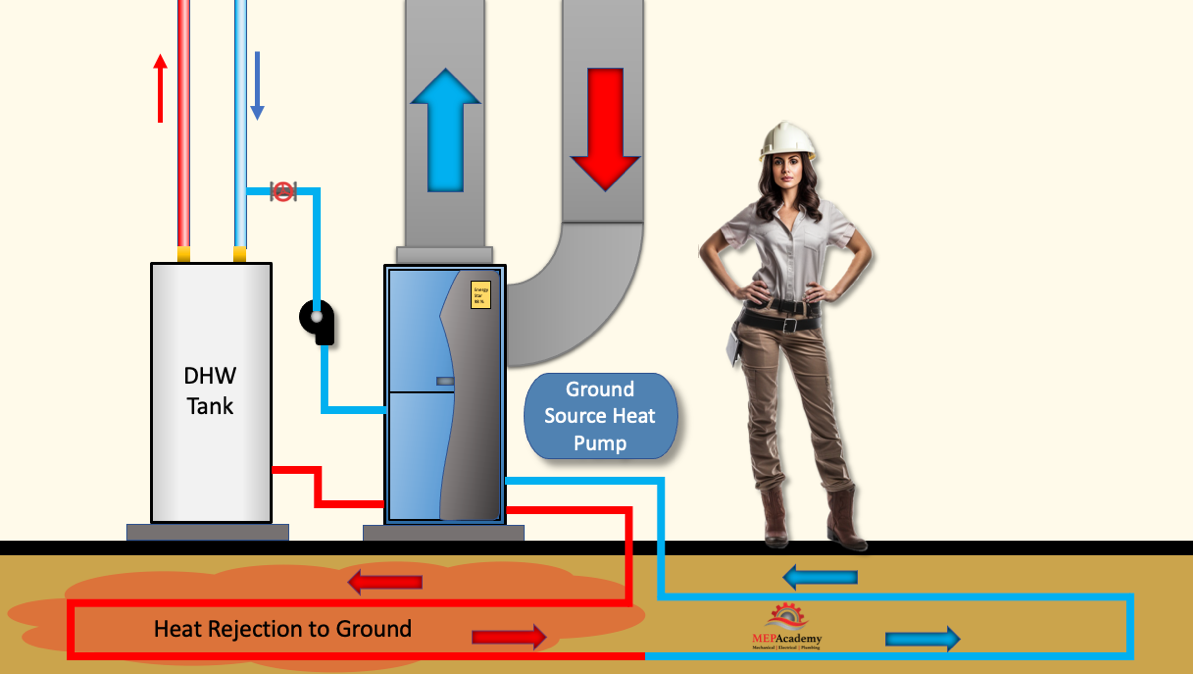
3. Heat Transfer: The superheated refrigerant flows through the heat exchanger, transferring its heat to the water flowing through a separate set of pipes within the exchanger. This process heats up the water as it passes through.
4. Temperature Control: The control valve regulates the flow of superheated refrigerant to the heat exchanger, adjusting the amount of heat transferred based on the desired water temperature. This ensures that the water doesn’t get excessively heated.
5. Hot Water Storage: The preheated water is directed to a separate storage tank dedicated to hot water. The geothermal heat pump’s circulation system then draws from this tank whenever hot water is needed in the building.
By using the excess heat from the geothermal heat pump’s cooling cycle, the desuperheater provides a supplemental source of hot water. This can significantly reduce the energy consumption associated with heating water separately.
It’s important to note that the effectiveness of a desuperheater in a geothermal heat pump system depends on factors such as the operating conditions, the cooling load, and the hot water demand. Consulting with a professional HVAC technician experienced in geothermal systems is recommended to properly assess and install a desuperheater for a geothermal heat pump.


